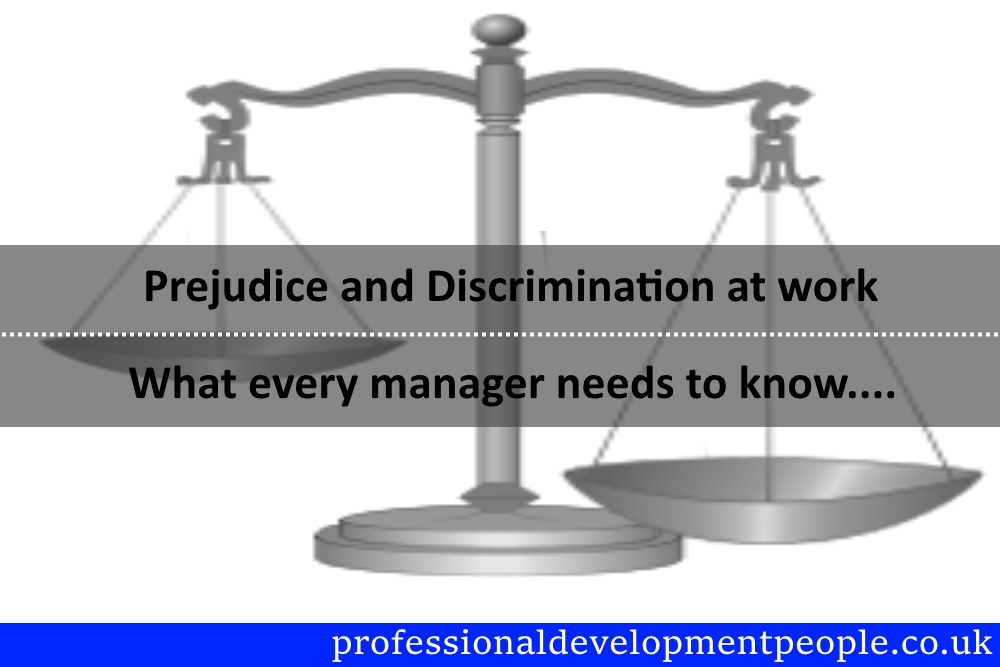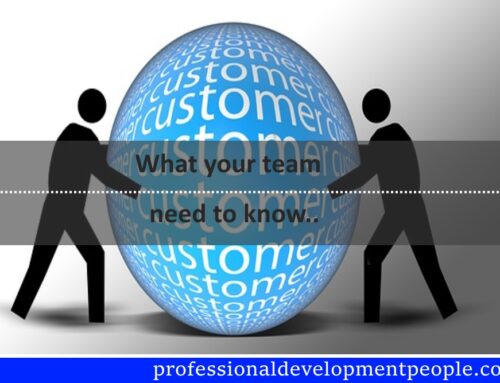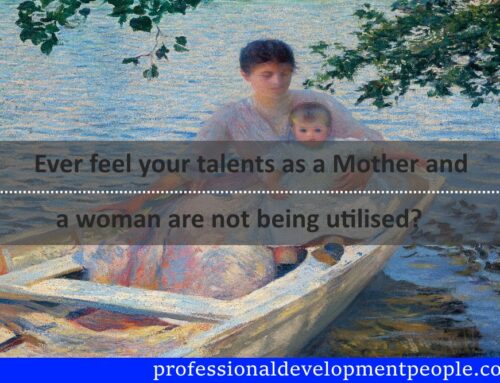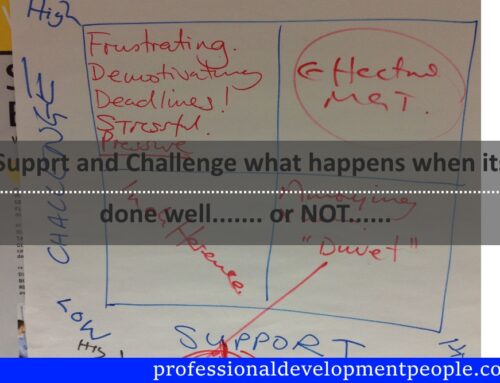Prejudice and discrimination in the workplace
When dealing with managers on various training events it’s rare to come across someone who would fall foul of the 2010 Equalities Act. The Act sets out 9 protected characteristics and various ways in which some or all of the characteristics can be abused.
The nine Protected characteristics are;
• Age
• Disability
• Gender Reassignment
• Race
• Religion or Belief
• Sex
• Sexual Orientation
• Marriage and Civil Partnership
• Pregnancy and Maternity
To most of us these protected characteristics are factors which should play no part in treating others unfairly, they are not relevant in work based behaviours and choices. To be clear; your age should have no bearing on your abilities in the work place.
These protected characteristics can be abused in the following ways
1 Direct Discrimination.
When someone treats an individual unfairly because of a protected characteristic.
“Don’t employ Hindus because……. I don’t like them”
2 Associative Discrimination
When someone treats and individual unfairly because they are linked to someone with a protected characteristic.
“ I won’t employ him because he has a disabled wife and that will mean he takes time off for her care”
3 Discrimination by Perception
When an individual is treated unfairly because someone thinks they are linked to a protected characteristic.
“ She looks like she’s too young to meet customers”
4 Indirect Discrimination
Stipulating a particular rule or process, which might sound reasonable but discriminates.
“Male Police officers must be 6ft 1 tall, there by making sure that the majority of British Sri Lankans who may not get to be 6ft, cannot become Police Officers.”
5 Harassment
Employees can now claim offensive behaviour, even if it isn’t directed at them to be harassment. The important aspect of this is the impact of the behaviour on the recipient NOT the intention of the Harasser.
6 Harassment by a third party
Where an employer allows its employees to face harassment by someone else.
“a courier is subjected to sexist comments by a customer, but the employer keeps sending them back into the same business”
7 Victimisation
Not quite the dictionary definition of victimisation. This is where an individual is treated differently and unfairly because of a course of action they have taken, or because of their support for an individual that has taken a particular course of action.
“ An employee supports a friend in making a grievance and is then side-lined for promotion.
Not all the protected characteristics are protected entirely (See the ACAS TABLE)
In most work places
What we do come across often is that individuals don’t think about their feelings and the outcomes. They don’t think about their attitudes which can drive their behaviours, their prejudices which can drive inappropriate discrimination.
There are four outcomes forming this paradigm
Prejudice and discrimination
Fred comes to work with a strong race prejudice and then makes racist comments.
Outcome. Fred should be disciplined and probably sacked
No Prejudice and Never discriminates
Who on earth is that? Saints, Babies…. I have never met someone in this area, although every business I have ever been in seems to expect it….
No Prejudice but discriminatory behaviour
How can that be? Fred never has a malicious though, but his behaviour is discriminatory. This is the grave yard for managers old and new. How can someone do this?
1 Ignorance – they just don’t know what they are doing
2 Ignoring – they see something happening, but take a back seat rather than dealing with it. ( a suicidal management strategy)
3 Avoidance – They deliberately manipulate situations to not be present when problem might occur. Fred and Julie are always arguing at work, rather than deal with it their manager rosters fred and Juile on a shift pattern he isn’t on
4 To join in – because the behaviours that aren’t desirable are being demonstrated by someone with POWER (click for the blog on power) , rather than Challenge they go along with it
Prejudice but no discriminatory behaviour
Thinking and feeling something, but not allowing others to see that in your behaviour. Which accounts for the majority of us!
Interested ? Why not give Richard or Paula a call?
Email Richard or Paula
Tweet Richard or Paula
We would love to talk to you and your colleagues about brilliant work place behaviours. #how2PDP





